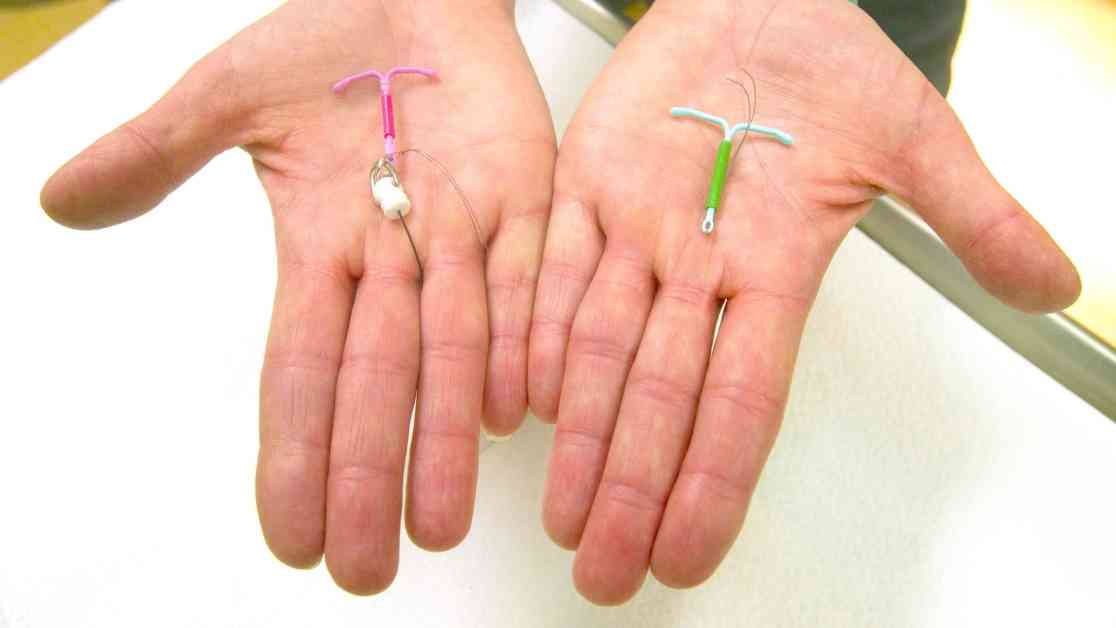Making Gynecological Procedures More Comfortable for Patients: A Focus on Pain Management
Federal officials have recently acknowledged that the pain experienced during gynecological procedures, such as IUD insertions, can often be more intense than anticipated. The use of a local anesthetic like lidocaine has been identified as a potential solution to reduce patient discomfort during these procedures. The U.S. Centers for Disease Control and Prevention (CDC) has issued new guidance that emphasizes the importance of discussing pain management options with patients, recognizing the need for improved comfort during gynecological visits.
It is not uncommon for women to share their experiences on social media, advocating for better pain management options during gynecological procedures. Videos documenting their grimaces, screams, and tears during IUD insertions have shed light on the need for increased awareness and consideration of patient comfort. However, the issue extends beyond just IUD insertions, as many outpatient procedures such as biopsies and uterine examinations can also cause significant pain.
Gynecologists and patients alike are calling for more open conversations about the availability of local anesthetics and other pain relief options for gynecological procedures. Lidocaine spray or gel, along with other pain treatments like ibuprofen or local anesthetic injections, are considered safe and effective by gynecologists. While the CDC’s new guidance serves as a valuable resource, it is not a definitive rule, leaving room for individualized approaches to pain management.
Dr. Cheruba Prabakar, the owner of Lamorinda Gynecology and Surgery in Lafayette, California, has taken proactive measures to prioritize patient comfort during IUD insertions. All of her patients undergoing this procedure receive a local anesthetic spray at a minimum. Additionally, she schedules 45-minute appointments to ensure ample time for addressing patient questions and concerns, emphasizing the importance of patient-centered care.
Some healthcare practices have begun offering more robust pain management options in response to patient feedback. Planned Parenthood League of Massachusetts, for example, introduced sedation choices for IUD insertions and certain procedures involving potential cancerous growths following patient requests. These sedation options aim to provide a level of comfort where patients remain drowsy but not fully asleep during the procedure, enhancing the overall experience for individuals seeking gynecological care.
Dr. Luu Ireland, an OB-GYN at Planned Parenthood League of Massachusetts and UMass Memorial Hospital, highlights the significance of providing a range of pain management options to accommodate varying patient needs. From anxiety medications to local anesthetics, these offerings aim to empower patients in making informed decisions about their healthcare. Ireland acknowledges that inadequate pain management can deter patients from seeking essential procedures, underscoring the need for comprehensive pain relief strategies.
Dr. Prabakar emphasizes that the primary obstacle to addressing patients’ pain concerns is not financial constraints or equipment availability but rather the investment of time and trust in patient-provider relationships. Recognizing that many patients have histories of trauma or shame associated with gynecological visits, Dr. Prabakar stresses the importance of creating a safe and supportive environment where patients feel heard and understood.
Dr. Deborah Bartz, an OB-GYN at Brigham and Women’s Hospital and a faculty member at Harvard Medical School, advocates for early education on the impact of trauma on patient experiences in gynecology. Understanding how anxiety and trauma can influence pain perception is crucial in tailoring care to individual needs. Research indicates that providers often underestimate the pain experienced during IUD insertions, highlighting the need for improved awareness and sensitivity to patient discomfort.
Studies have shown disparities in pain management based on racial and ethnic backgrounds, with women of color facing greater challenges in having their pain acknowledged and addressed by healthcare providers. Black individuals, in particular, are more likely to be undertreated for pain compared to their white counterparts, underscoring the systemic inequities in healthcare delivery. Efforts to enhance pain management practices must prioritize equitable care for all patients, regardless of their background or identity.
Kate Nicholson, the executive director of the National Pain Advocacy Center, emphasizes the long-standing impact of pain dismissal on individuals’ healthcare experiences. Patients who have been marginalized and disregarded in their pain management are more susceptible to enduring trauma within the healthcare system. The onus falls on healthcare providers to listen to their patients’ concerns and offer comprehensive pain relief options to promote a positive and respectful patient-provider relationship.
Sarah Friedberg, a mother of three from Massachusetts, recounts her journey of advocating for better pain management during gynecological procedures. Despite experiencing significant pain during an IUD insertion years ago, Friedberg took proactive steps to ensure her comfort during a subsequent biopsy procedure. Her persistence in requesting a lidocaine spray from her doctor ultimately led to a more tolerable experience, highlighting the importance of patient empowerment in healthcare decision-making.
As the healthcare landscape continues to evolve, it is imperative that gynecologists prioritize patient comfort and well-being during procedures. Improved communication about pain management options, along with a heightened awareness of trauma-informed care, can significantly enhance the patient experience in gynecology. By acknowledging and addressing patients’ pain concerns, healthcare providers can foster a culture of trust, respect, and empowerment in women’s healthcare.
Key Considerations for Pain Management in Gynecological Procedures
Women undergoing gynecological procedures often have questions and concerns about pain management. Understanding the available options and advocating for personalized care can lead to a more positive experience. Here are some key considerations when discussing pain management with your healthcare provider:
– **Exploring Pain Relief Options**: Inquire about the different levels of pain management available, including oral medications like ibuprofen, local anesthetics such as lidocaine spray or gel, and injections for targeted pain relief. Discussing these options with your provider can help determine the most suitable approach for your comfort.
– **Assessing Individual Pain Thresholds**: Recognize that pain perception varies among individuals and can be influenced by factors like anxiety and stress. Communicate your past experiences and concerns with your provider to establish a tailored approach to pain management that aligns with your needs.
– **Advocating for Your Comfort**: If you feel that your pain concerns are not being adequately addressed by your healthcare provider, don’t hesitate to speak up and advocate for the pain relief options you prefer. Educating yourself about available treatments and expressing your preferences can help ensure a more comfortable and positive healthcare experience.
Empowering Patients Through Informed Decision-Making
Patient empowerment is at the core of effective pain management in gynecological procedures. By fostering open communication, providing comprehensive information about pain relief options, and prioritizing patient comfort, healthcare providers can create a supportive and empowering environment for women seeking gynecological care. As the healthcare industry continues to evolve, placing a stronger emphasis on patient-centered care and individualized pain management strategies can lead to improved outcomes and enhanced patient satisfaction.
In conclusion, the journey towards making gynecological procedures less painful requires a collaborative effort between healthcare providers and patients. By advocating for comprehensive pain management options, fostering trust and communication, and prioritizing patient comfort, gynecologists can enhance the overall quality of care provided to women. Embracing a trauma-informed approach, addressing systemic disparities in pain management, and empowering patients to make informed decisions are essential steps towards creating a more inclusive and supportive healthcare environment for all individuals.

















